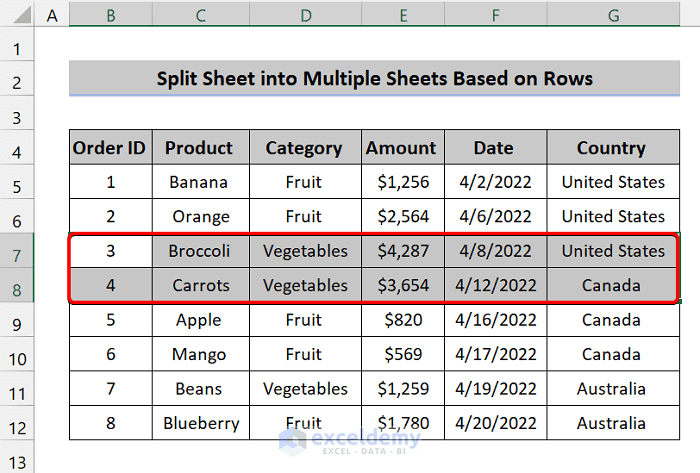5 Easy Ways to Enter Data into Multiple Excel Sheets

When you're working with multiple Excel sheets, managing and entering data efficiently is crucial. Whether you're dealing with financial reports, inventory lists, or project timelines, ensuring accuracy and organization across several spreadsheets can boost productivity significantly. Here, we explore five easy ways to streamline data entry into multiple Excel sheets.
1. Using Shortcut Keys for Navigation

One of the simplest yet most effective techniques for entering data across multiple sheets is to master Excel’s keyboard shortcuts. Here’s how you can navigate and enhance your data entry process:
- Switch Sheets: Use
Ctrl+PgUpto move to the previous sheet andCtrl+PgDnfor the next sheet. - Copy Paste Across Sheets: After selecting the data, use
Ctrl+Cto copy andCtrl+Vwhen you’ve switched to the desired sheet to paste it. - Enter Formula Across Sheets: Type a formula in one cell, then use
Ctrl+Enterto apply it to a selected range across different sheets.
By mastering these shortcuts, you’ll be able to work faster, reducing the time spent switching between sheets manually.
2. Group Worksheets for Synchronous Data Entry

If you need to enter the same data or make changes to multiple worksheets at once:
- Click on the first sheet tab you want to edit.
- Hold down the Shift key and click on the last sheet tab to select all the sheets in between.
- Any data you enter or formatting you apply will now be replicated across all selected sheets.
This method is particularly useful when creating uniform reports or when applying the same settings to similar data sets.
| Function | Action |
|---|---|
| Select Sheets | Shift + Click on sheet tabs |
| Enter Data | Data entered will appear on all selected sheets |

👨🏫 Note: Remember that grouping sheets will affect all selected sheets, so ensure that this is what you intend before proceeding.
3. Using Excel Macros for Automated Data Entry

Macros can automate repetitive tasks, saving time when entering data across multiple sheets:
- Open the Developer tab (Enable if not visible).
- Click Record Macro and perform the actions you wish to automate.
- Click Stop Recording. This macro can now be run to enter data or make changes simultaneously.
- Create Personal Macro Workbook: If you want the macro to be available in all workbooks, save it in the Personal Macro Workbook.
With macros, you can automate nearly any Excel action, making data entry into multiple sheets almost instantaneous.
4. Leveraging Power Query for Data Importation

Power Query, now integrated into Excel, is ideal for importing and transforming data from external sources:
- Import Data: Navigate to the Data tab, choose Get Data, and select your data source. This could be a file, database, or even another Excel file.
- Transform Data: Use Power Query’s intuitive interface to transform, clean, and reshape your data before loading it into multiple sheets.
- Merge and Load: Combine data from multiple sources into a single query, then load it into different sheets as needed.
This feature is especially useful for businesses dealing with large datasets or those needing to consolidate information from various files.
5. Utilizing Excel’s Consolidation Feature

If you need to consolidate data from different sheets into one master sheet:
- Select a blank cell in the destination sheet where you want the consolidated data.
- Navigate to Data > Consolidate.
- Choose your function (e.g., Sum, Average) and select the data ranges from each source sheet.
- Enable the Create links to source data option if you want Excel to update the consolidated data when the source data changes.
This method is perfect for creating summary reports or analyzing data from multiple perspectives in a single sheet.
Managing and entering data efficiently into multiple Excel sheets is not just about saving time; it's about enhancing accuracy and boosting productivity. By using shortcuts, macros, Power Query, and Excel's inbuilt features, you can transform the way you handle data. Each technique has its unique advantages, and by applying these methods strategically, you can cater to various data management needs, from simple navigation to complex data consolidation. As your proficiency with these methods grows, so too will your efficiency in working with Excel, ultimately leading to more streamlined workflows and better data integrity across your spreadsheets.
Can I automatically update data across multiple sheets?

+
Yes, by using formulas with cell references to other sheets or by setting up macros that update data in multiple sheets simultaneously.
How do I ensure my macros run correctly across different computers?

+
Save macros in the Personal Macro Workbook, which is generally available on all machines. Also, ensure that all references to cells, ranges, or data structures remain consistent across environments.
What are the limitations of Excel’s Consolidate feature?

+
Excel’s Consolidate function works well for numerical data but struggles with complex data arrangements. It also doesn’t preserve data formatting or structure, requiring additional setup if visual consistency is needed.
Can Power Query handle unstructured data?

+
Yes, Power Query offers advanced data transformation capabilities, allowing you to clean, shape, and structure unstructured data for better analysis.
Is there a limit to how many sheets I can work with?

+
Excel technically supports up to 255 sheets in a single workbook, though performance may decrease with very large datasets or numerous sheets.



